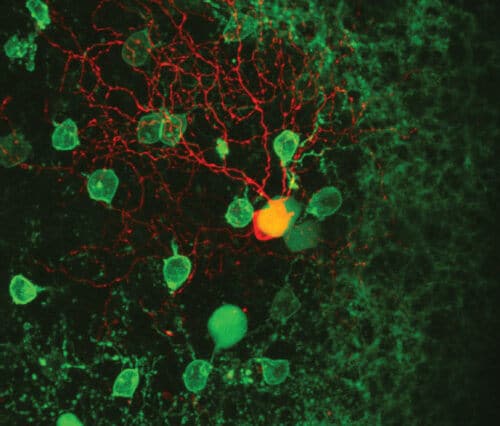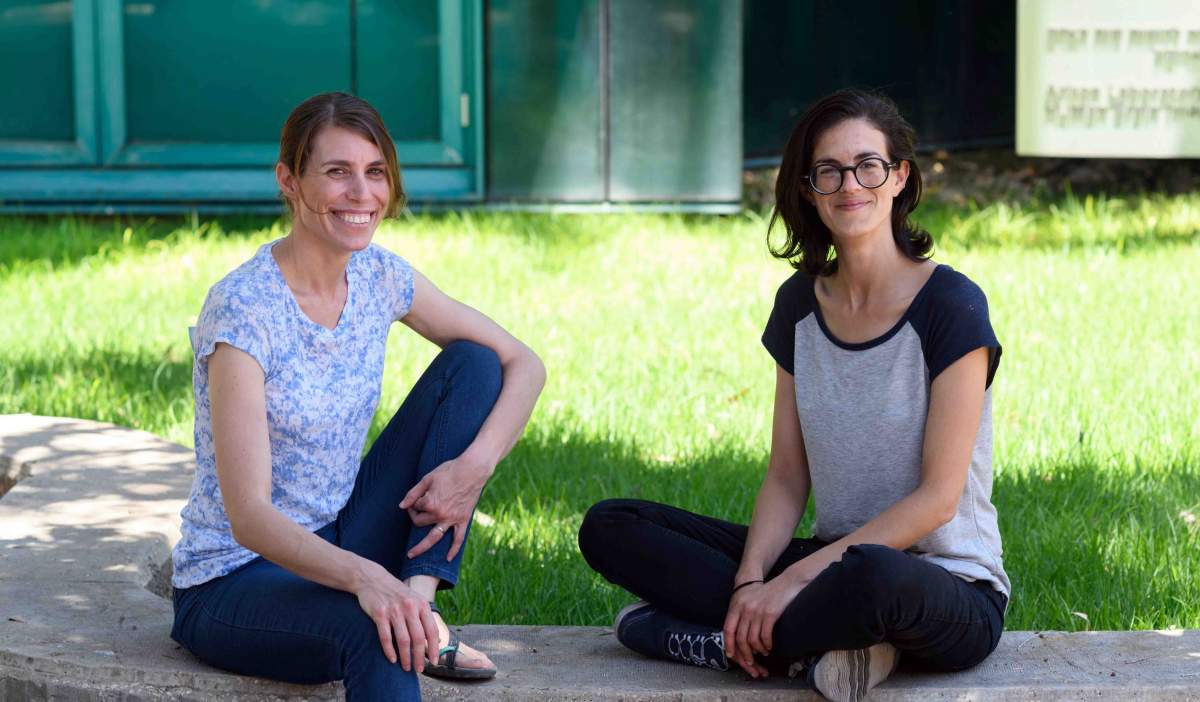Weizmann Institute of Science scientists have shown that direction-coding cells in the retina enjoy greater flexibility than previously thought: although they are anatomically built to respond to a certain direction, they can respond in the opposite direction as a result of changes in the environment

A snake twisting in a thicket, a tiger lurking in the bushes or a messenger speeding on a scooter - there is no denying that the ability to detect movement in space is essential for our survival. The possibility of seeing the world in moving images is self-evident for most of us, but as the autonomous vehicle developers can testify, detecting movement in space is an extremely complicated computational operation. Our ability to detect movement begins already in the eye - through a group of nerve cells in the retina that is anatomically constructed so that each cell responds to a certain direction - right, left, up or down. Recently Weizmann Institute of Science scientists have revealed that these cells, called direction-encoded cells, enjoy greater flexibility than previously thought: despite their well-defined role, they can change their activity, as a result of changes in the environment, and react in the opposite direction to that for which they were intended. Our brain is known for its great flexibility, but this mechanism is a unique example of how neural circuits in the eye can transcend their anatomical structure and change their function dynamically.
Like sound waves to the ears or touch to the skin, the eyes respond to light waves reflected from the environment and translate the light energy into nerve signals that the brain can understand. The retina of the eye has millions of light receptors, and different types of nerve cells encode the information into a series of parameters - color, shape, movement and other features. Similar to other sensory cells, the light-receiving cells are organized according to a principle in which the calculation in the "center" and the calculation in the "surround" are opposed (antagonistic center-surround); This principle allows the cell to respond with excitement when a stimulus appears in the center of its input field - and to respond with inhibition (inhibition) when the stimulus is on the perimeter of the input field. This organizing principle exists in many sensing systems and it enables high computational complexity, since each nerve cell can encode the same stimulus differently depending on the location. In the context of the sense of sight, "center-periphery" computation is fundamental to visual acuity - as it significantly increases our ability to place objects in space and separate colors, but its contribution to retinal movement detection was unknown.
A few years ago, during post-doctoral research at the University of California, Berkeley, she found out Dr. Michal Rivlin From the Department of Neurobiology a surprising finding: repeated light stimulation caused direction-encoded cells to reverse the direction of movement to which they respond by 180 degrees. The surprise stemmed from the connectivity in the given circuit, which has been extensively studied for decades: rightward-encoded cells will receive inhibitory connections from cells to their left, and this particular wiring underlies their directional preference. In the current study led by her research student, Leah Ankri, the two mapped out - with the assistance of postdoctoral researcher Dr. Elishi Ezra-Zur - what exactly happens in the neural circuit of the direction-coding cells following the same repeated stimulation, and checked whether this surprising response indicates an unknown mechanism that affects the way we perceive movement.
To answer these questions, the researchers examined the light response of different cells in the retina of mice, using a two-photon microscope combined with electrophysiological recording methods. The findings revealed that the surprising direction reversal is actually evidence that the direction coding mechanism is also subject to the "center-periphery" principle and therefore can change dynamically depending on the visual stimulus. "In fact, we showed that the repetitive stimulation masked the center of the input field in the neural circuit of the direction coding cells and caused the circumference to take over the calculation", says Ankri. "In other words, the center-periphery principle allows better spatial resolution not only for shape and color as was known until now, but also for movement."

Right: Leah Ankri and Dr. Michal Rivlin. seeing eye to eye
Learn about the brain from the eyes
It is customary to say that the eyes are the "window to the soul". In Dr. Rivlin's laboratory, which focuses on dynamic processes in the retina, the eyes are practically examined as a "window to the brain". The human brain consists of about 100 billion nerve cells connected to each other by about 100 trillion electrical connections - and this complexity makes it very difficult to reach conclusions regarding the legality of the system's activity. The retina of the eye, on the other hand, is a much smaller neural network. In the mouse retina there are "only" a few million cells, connected to each other in anatomically well-differentiated connections. Therefore, Dr. Rivlin's research approach focuses on the computational processes carried out in the retina with the thought that this observation will make it possible to say significant things also about brain activity in general.
The findings of the present study may provide reinforcement for this approach to the study of the retina. Although the center-periphery principle is known from various sensory systems and from higher processing areas in the brain, the discovery that this dynamic principle is also valid in the circuit where the calculation is based on anatomy, may mark it as a key principle in neural computing in general - a principle that transcends network complexity and transcends function. "Until now, they didn't know that such complex and dynamic things could happen in the retina," says Ankri. "It is possible that center-periphery is a key principle in brain activity in general - perhaps even one of the computational motifs that allow our brains to be so dynamic."
Science books
The mouse retina has more than 30 types of ganglion cells that differently encode information from the visual field; At least 7 of them are direction coded cells,

One response
"..at least 7 of them are direction coded cells.."
really? 7 or 7 million? Because it's really not the same.